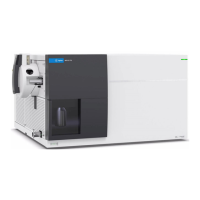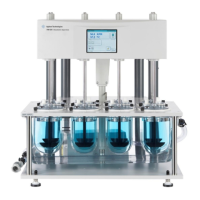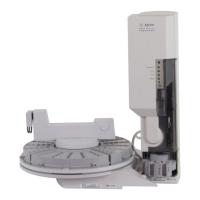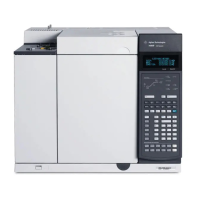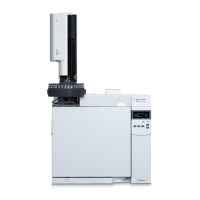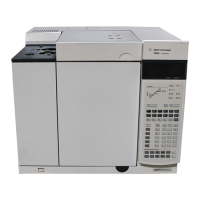108 Troubleshooting and Maintenance Manual
4 General Maintenance
Some parts can be damaged by electrostatic discharge
The wires, contacts, and cables connected to the analyzer components can
carry electrostatic discharges (ESD) to the electronics boards to which they
are connected. This is especially true of the mass filter (quadrupole) contact
wires, which can conduct ESD to sensitive components on the quadrupole
board. ESD damage may not cause immediate failure but will gradually
degrade performance and stability. See “Electrostatic discharge” on page 79
for more information.
Some analyzer parts should not be disturbed
The mass filters (quadrupoles) require no periodic maintenance. In general, a
mass filter should never be disturbed. In the event of extreme contamination,
it can be cleaned, but such cleaning should only be done by a trained Agilent
Technologies service representative. The HED insulator must never be
touched.
More information is available
See the Agilent 7000 Series Triple Quad GC/MS Operating Manual for
information on removing, disassembling, cleaning, assembling, and
installation of the ion source. This chapter contains procedures for removing
and installing the heaters and sensors for the ion source and the analyzers.
If you need more information about the locations or functions of analyzer
components, refer to Chapter 7, “Analyzers and Collision Cell” on page 145.
Electrostatic discharges to analyzer components are conducted to the quadrupole
board where they can damage sensitive components. Wear a grounded antistatic wrist
strap (see “Electrostatic discharge” on page 79) and take other antistatic precautions
before you open the analyzer chambers.
Incorrect handling or cleaning of the mass filter can damage it and have a serious,
negative effect on instrument performance. Do not touch the HED insulator.

